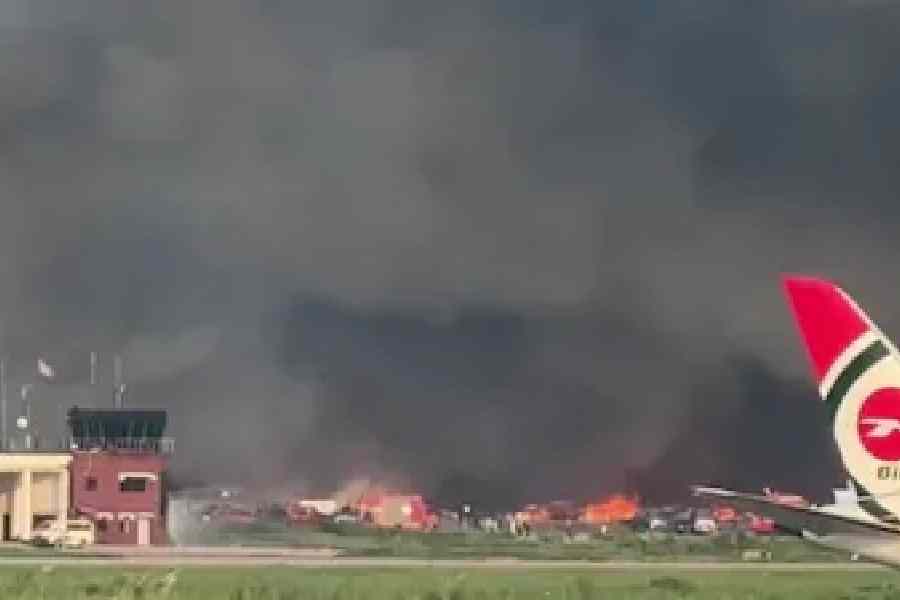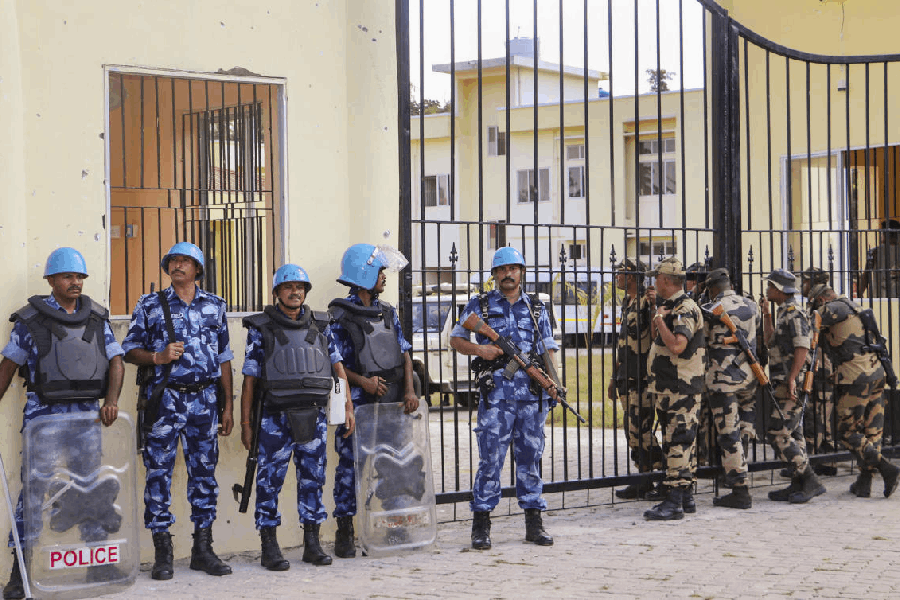The main cause of fatalities in earthquakes in India is usually collapsed buildings. For example, the death toll in the Nepal earthquake(s) has already gone beyond 8,500 with several people losing their lives in poorly built buildings. The number of deaths in an earthquake depends on shaking intensity, vulnerability of the building stock, time and season of the earthquake (whether people will be indoors or
-1.jpg)
outdoors at the time of shaking), and to some extent on the efficacy of rescue and relief.
The timing of the Nepal earthquake may have been a blessing as it was during the day and thousands of people were in open spaces rather than in vulnerable buildings that collapsed. It was also on a Saturday, the only day when schools remain closed in Nepal. Seeing pictures of several collapsed school buildings, it is clear that we had a proverbial escape from monumental tragedy, wherein thousands of children would have been killed in these schools. Earthquakes cannot be predicted with any degree of precision, neither can they be prevented. If a community is living in places with high earthquake hazard, the effects of the next earthquake can only be minimised through mitigation and preparedness. One important cornerstone of mitigation is ensuring that all future construction is built to resist earthquakes.
Viewing Howrah town in the context of the recent spate of earthquakes, there is much to be worried about. First, the earthquake history of the state of West Bengal leaves no room for complacency, that, being in a “moderate” seismic hazard Zone III, the earthquake problem is not ours. Latur, where 8,000 lives were lost in an earthquake in 1993 and Ahmedabad where over 110 multi-storeyed apartments collapsed in the Bhuj earthquake, are both located in Seismic Zone III.
The state and its adjoining areas have a recorded history of earthquake activity dating back to the past three centuries. Sandy soils in river basins have a tendency to amplify the effects of an earthquake and Howrah’s alluvial soil deposits could amplify seismic energies and hence add to the hazard.

-18.jpg)
-11.jpg)
Major north-south and east-west faults terminating in the Burdwan, Murshidabad and Birbhum districts in the city’s backyard (only about 150 km away) adds to the seismic risk of Howrah city. Eastern flanks of Jalpaiguri and Cooch Bihar fall in the highest risk Zone V along with the entire north-east.
The Himalayan Frontal Thrust (HFT) passing through the Dooars in the north and in the east is around 450 km away from Howrah. All these factors place Howrah, like Calcutta, within the expected range of considerable damage from Great earthquakes (of magnitudes > 8.0) in the Himalayas, compounding worries of seismic safety in the region.
The building stock in Howrah town is varied and comprises the older two-three storeyed family homes, some dating back to the mid-19th century, the newer multistoreyed apartment complexes, and densely populated slums. The vulnerability stems from unsafe and poor construction.
The older load bearing brick houses with timber roofing systems were commonly used for residential buildings. Shallow arch roofs were also common with arched door and window openings with different kinds of arches such as flat arch, segmental arch and semi-circular arch. Arches are known to perform poorly and even collapse in severe shaking.
The brick buildings with timber and steel frames are found in the older houses, usually in dense arrangements with contiguous walls and inner courtyards to allow in natural light and ventilation. The buildings are usually low rise, up to a maximum of two storeys. The thick walls are unreinforced brick masonry construction laid in lime mortar. In the case of older buildings characterized with wooden floor structures, the walls were not joined together by means of wooden or iron ties.
The weakest links in this construction are usually wall-floor and wall-roof connections in case of timber floor construction. Without proper connections between the roof and walls, the structure is not held together, making this typology very vulnerable to earthquake shaking. This was quite evident in the building collapses in Kalimpong and Darjeeling in the 2011 Sikkim earthquake, which at a magnitude of 6.9, was not even a major earthquake, according to the Magnitude based classification system.
-5.jpg)
Many of the older and larger joint family houses, have courtyard planning where the house is built in the shape of a C or U around a courtyard. These alphabetic shapes are examples of “re-entrant corners” that are extremely vulnerable during earthquake shaking. They experience damage in the corner with the building corners giving way and even causing collapse of the structure or large parts of the structure.
The newer reinforced concrete (RCC) frame residential buildings in Howrah also appear to be extremely vulnerable. The plan shapes of many of these buildings, usually follow the site boundaries, and have irregular plan shapes and column grids. The columns are not located along straight grid lines and the beams often frame into other beams and not into columns, to accommodate the architectural layout of an apartment, often driven by functional needs.
Varying size requirements of drawing rooms, bedrooms, kitchen, toilets, stores, etc., and tendency of concealing the columns or beams within the brick work, lead to a compromised structural layout.
Lack of proper integration between the architectural layout and the structural system is responsible for these types of compromises. Almost all the residential buildings have the least column dimension as 250 mm, sometimes even 200 mm where the developer opts for 200 mm thick external walls to increase the carpet area.
Unlike Calcutta, open ground storey parking is not mandated in Howrah because of less stringent parking regulations. Hence many stand alone apartment buildings have commercial establishments in the ground storey, certainly a safer situation compared to a “soft” ground storey. However, open ground storeys for parking are seen in several apartment complexes. While the Indian Codes do have provisions for accounting for these “open storeys”, through structural design, such buildings often end up with soft ground storeys that may collapse in earthquake shaking, as seen in recent earthquakes in the subcontinent.
-9.jpg)
-21.jpg)
-6-(1).jpg)
A classic “pancake” style building collapse video from the Nepal earthquake that has gone viral on Facebook, is a multistorey building with an open and clearly “soft” storey that comes down like a pack of cards. There may be hundreds of such buildings in Howrah. In the absence of even minimal enforcement of codes, and municipal enforcement being restricted primarily to checking for area and fire safety related violations, the onus of designing and supervising a structurally safe building lies with the structural engineer and the developer. It is expected that the larger residential developments, with taller buildings, and major commercial structures may not focus as much on saving costs on the basic structure and prefer to engage reputable design firms.
Howrah town also has large slums characterized by high density development comprising both thatched and masonry buildings on narrow winding lanes and by-lanes. The high population and space densities along with the unregulated and vulnerable building stock, add up to a very vulnerable built environment. Warehouses, in the areas adjoining the river, represent another highly vulnerable building typology in Howrah. These are tall brick structures without any earthquake resistant features such as horizontal bands at intermediate levels. Moreover, they often have jack arch roofs and arched openings. Their poor state of maintenance compounds their seismic vulnerability.
Since the settlement predates Calcutta and is more than 300 years old, it can be expected that a considerable section of the building stock in Howrah, specially the old ones would be in poor condition. Moreover, the old brick buildings would have been built without seismic resistant features and would be clearly vulnerable to earthquakes. Clearly, most buildings may not be engineered structures and even if they are, this does not necessarily imply seismic safety. This has been demonstrated by real life experiences with recent earthquakes in India, where so-called engineered buildings with reinforced concrete frames performed abysmally, leading to many human casualties.
Finally, a building’s performance depends on what is actually built irrespective of what was intended, designed or put in the construction drawings. Notwithstanding technical soundness in architectural and structural design solutions, there has to be an effective enforcement mechanism in place to ensure that safe buildings actually get built.

The writer, Keya Mitra, is a doctorate and a professor at the Department of Architecture, Town and Regional Planning at Indian Institute of Engineering Science and Technology, Shibpur

-1.jpg)








